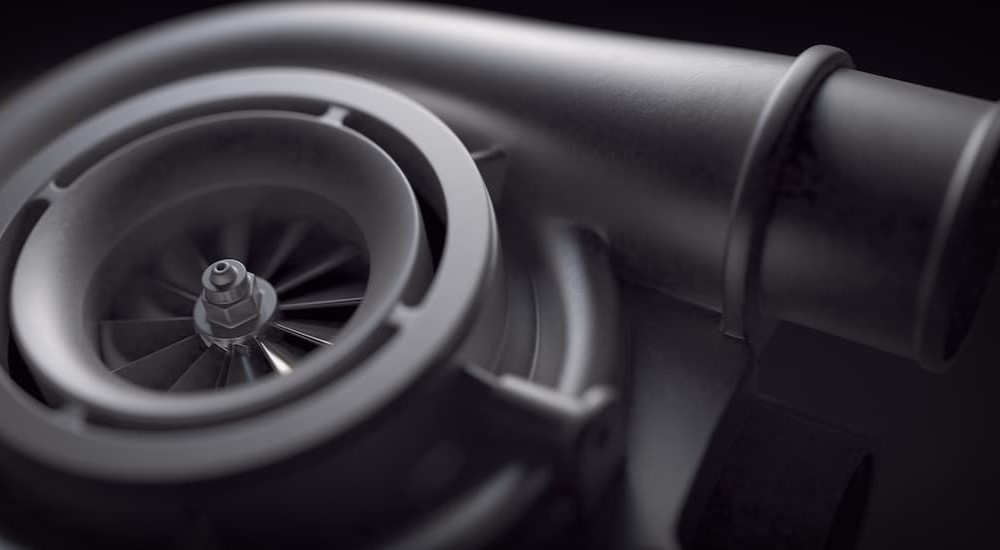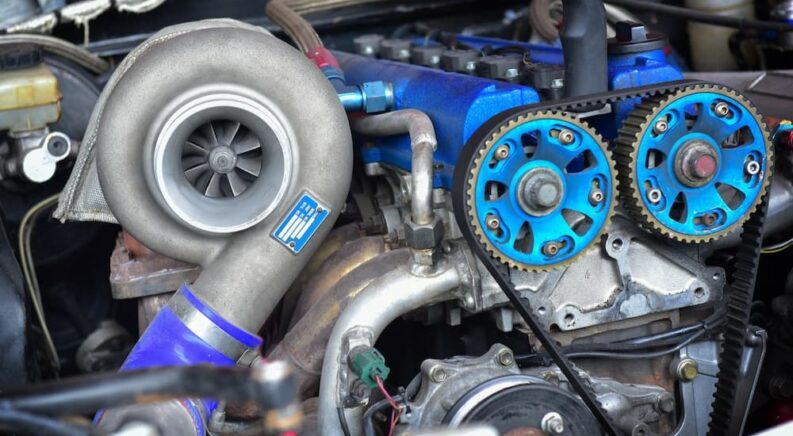Turbochargers for engines are quite complicated but also surprisingly simple, with a vast array of different options available from many manufacturers. You’ll find some turbocharged engines coming straight from the factory, either to boost overall performance or to get decent performance from a small engine, while others are available as aftermarket options that you can install yourself or have a mechanic do for you. The basic idea behind a turbocharger is quite straightforward, but modern technology has allowed them to become more complex and incredibly efficient at how they can utilize wasted energy from your engine and turn it into a boost in performance and fuel efficiency.
With so many different options for turbochargers available, it’s worth taking some time to consider what’s offered before you decide on the right one for you. Keep in mind that your vehicle will have a tremendous impact on which type of turbocharger you can use, assuming you’re interested in one as an aftermarket add-on. That being said, it’s still worthwhile to understand what’s out there and how each type can affect the performance of your vehicle. Let’s look at the most common types of turbochargers and what makes each of them different from one another.
Turbocharger Basics
Before we look at the specific types of turbochargers available, it’s important that we go over some basics of how these setups work in order for the differences between them to make sense. The beauty of a turbocharger is in its essential simplicity. Basically, all it does is use exhaust gasses already produced by every engine and take advantage of that to improve the power and efficiency of the engine. This requires three basic elements: an exhaust housing, a turbine with an exhaust wheel, shaft, and compressor wheel, and a compressor chamber. How these different components are put together and designed has a big impact on how the turbocharger operates and the performance it delivers.
The basic functionality is this:
- Exhaust leaves your engine like normal.
- Rather than flowing into a standard exhaust manifold, the exhaust gases go into the exhaust housing of your turbocharger.
- In the exhaust housing, the gases turn an exhaust wheel, which is part of a turbine.
- This wheel is connected to a shaft, which spins as the wheel spins.
- On the other end of this shaft, a compressor wheel spins (driven by the rotation of the exhaust wheel).
- This compressor wheel is located in a compressor chamber, which is installed between the air filter and intake manifold on your engine.
- Air flows through this compressor chamber, is compressed, and then flows into your engine—higher compression means more air and fuel in the cylinder.
- This higher mixture results in more power and greater fuel efficiency.
And that’s it—essentially, that’s how a turbocharger works. Exhaust from the engine rotates a wheel on a shaft, which rotates another wheel that compresses the air going into your engine, creating more power. This isn’t a perfect system. Some energy is lost as friction, and the engine has to work a bit harder against greater back pressure due to the exhaust wheel. Overall, however, a good turbocharger can get you a 30-40% boost in power. Different designs allow for different options and can improve this increase in power and efficiency, so let’s look at them.

Single Turbo
The simplest type of turbocharger is a single turbo, which is designed essentially as I described above. There are variations out there, particularly in terms of the turbine design—it spins insanely fast, and there are hydrodynamic as well as incredibly precise ball-bearing designs available. These are the smallest options, which makes them the easiest to install, and they can work well for a wide range of vehicles.
Twin-Scroll Turbo
The primary difference between a standard single turbo and a twin-scroll turbocharger comes down to the design of the exhaust chamber, specifically how exhaust enters that chamber. In this case, the word “scroll” refers to the connection that lets gas flow from the engine into the exhaust chamber of the turbocharger. Single turbo, or single-scroll designs, have a single opening that gas flows through. With a twin-scroll design, the opening is divided into two halves that each allow exhaust to go from the engine into the exhaust chamber of the turbocharger.
This may seem needlessly complex, but it works well due to how engines function. Let’s take a simple four-cylinder engine as an example: the engine works through a basic four-stroke process, and each cylinder fires at a different point. With a four-cylinder engine, the firing order of the cylinders is typically 1-3-4-2, but since these things are happening so quickly, there’s typically a bit of overlap between them.
With a single turbo design, the exhaust from all four cylinders feeds into a single connection, which means 1 and 3 can overlap and interfere with each other a bit. A twin-scroll turbo will have 1 and 4 feed into one scroll of the exhaust chamber, with 2 and 3 feeding into the other. This eliminates interference since the overlap is separated by its design. This type of turbocharger is bigger since it needs extra space for its twin-scroll design, and the engine in a vehicle needs to be designed properly to work with it, which is its biggest drawback. Otherwise, performance and efficiency are both improved with a twin-scroll design compared to a standard, single turbo.

Twin Turbo
A twin turbocharger, or twin turbo, shouldn’t be confused with a twin-scroll turbocharger; they’re two different things. Take a basic, single turbocharger and put two of them together: now you essentially have a twin turbo setup. It’s not quite that simple, of course, but that’s the gist of it—you’re just doubling the overall turbocharger configuration to boost power even more. This is one of the best ways to get a lot more power from an engine, but you need a lot of room under the hood to fit this kind of setup. You can even have a twin twin-scroll turbocharger if you’re really looking to take performance to the next level.
Variable Geometry Turbo (VGT)
These are generally the most advanced turbochargers on the market, and they can boost performance by a tremendous amount. They have internal vanes that direct how exhaust gases flow through the turbochargers, making adjustments in real time to optimize overall efficiency and performance. This is peak efficiency, but they’re also incredibly expensive and very rare for gas engines. Porsche is pretty much the only manufacturer using VGTs right now. They’re more common on diesel engines, actually, but for muscle cars with standard gas engines, you’re not going to find many of these out there.
Are You Ready to Turbocharge Your Engine?
As you can see, you have quite a few options for getting a turbocharger for your vehicle, though mostly, you’ll need to decide between a single or twin turbocharger and either a standard or twin-scroll design. A basic, single turbo is the least expensive way to go and the best option to fit a wide range of engines, while twin-scroll designs are pretty much always better in terms of performance and efficiency, but not every car can fit one. The most important thing is to make sure you know what your vehicle can handle. Do research before choosing a turbocharger, and then make sure it’s installed properly. Boosts to power can require adjustments to engine cooling, changes to your engine manifold, and switching to high-octane gas, so keep all of that in mind. Now you’re ready to start looking at different turbochargers on the market and find the one that will take your daily drive to the next level.

